Related Research Articles

Georgetown is the capital and largest city of Guyana. It is situated in Demerara-Mahaica, region 4, on the Atlantic Ocean coast, at the mouth of the Demerara River. It is nicknamed the "Garden City of the Caribbean." It is the retail, administrative, and financial services centre of the country, and the city accounts for a large portion of Guyana's GDP. The city recorded a population of 118,363 in the 2012 census.

George Bentham was an English botanist, described by the weed botanist Duane Isely as "the premier systematic botanist of the nineteenth century". Born into a distinguished family, he initially studied law, but had a fascination with botany from an early age, which he soon pursued, becoming president of the Linnaean Society in 1861, and a fellow of the Royal Society in 1862. He was the author of a number of important botanical works, particularly flora. He is best known for his taxonomic classification of plants in collaboration with Joseph Dalton Hooker, his Genera Plantarum (1862–1883). He died in London in 1884.
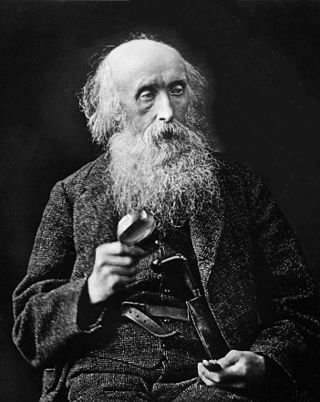
John Hutton Balfour was a Scottish botanist. Balfour became a Professor of Botany, first at the University of Glasgow in 1841, moving to the University of Edinburgh and also becoming the 7th Regius Keeper of the Royal Botanic Garden Edinburgh and Her Majesty's Botanist in 1845. He held these posts until his retirement in 1879. He was nicknamed Woody Fibre.
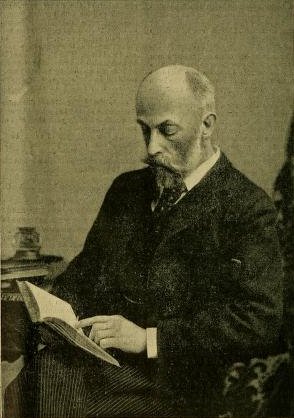
Sir William Turner Thiselton-Dyer was a leading British botanist, and the third director of the Royal Botanic Gardens, Kew.

Robert Wight MD FRS FLS was a Scottish surgeon in the East India Company, whose professional career was spent entirely in southern India, where his greatest achievements were in botany – as an economic botanist and leading taxonomist in south India. He contributed to the introduction of American cotton. As a taxonomist he described 110 new genera and 1267 new species of flowering plants. He employed Indian botanical artists to illustrate many plants collected by himself and Indian collectors he trained. Some of these illustrations were published by William Hooker in Britain, but from 1838 he published a series of illustrated works in Madras including the uncoloured, six-volume Icones Plantarum Indiae Orientalis (1838–53) and two hand-coloured, two-volume works, the Illustrations of Indian Botany (1838–50) and Spicilegium Neilgherrense (1845–51). By the time he retired from India in 1853 he had published 2464 illustrations of Indian plants. The standard author abbreviation Wight is used to indicate this person as the author when citing a botanical name.

Georgetown City Hall is a nineteenth-century Gothic Revival building located on the corner of Regent Street and Avenue of the Republic in Georgetown, Guyana. The building was designed by architect Reverend Ignatius Scoles in 1887, and was completed in June 1889. The building houses the offices of the Mayor, the City Council, and the City Engineer.
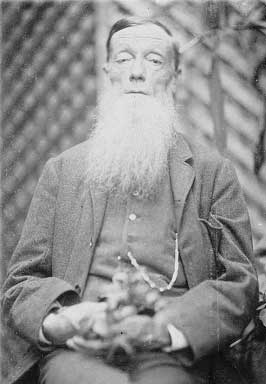
Frederick Manson Bailey was a botanist active in Australia, who made valuable contributions to the characterisation of the flora of Queensland. He was known by his middle name, Manson.
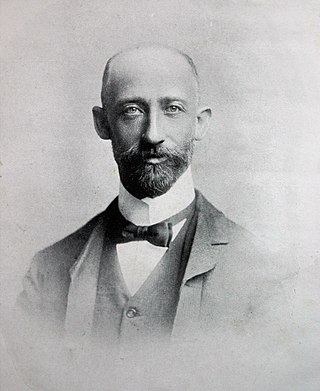
Thomas Robertson Sim was a botanist, bryologist, botanical artist and Conservator of Forests in Natal, best known for his monumental work The Forests and Forest Flora of the Colony of the Cape of Good Hope which appeared in 1907. He was the eldest of five children of John Sim (1824–1901), a noted bryologist and Isabella Thomson Robertson (1823-).
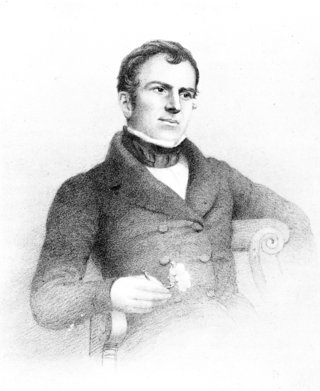
William Griffith was a British doctor, naturalist, and botanist. Griffith's botanical publications are from India and Burma. After a brief stay in Madras, he was assigned as a Civil Surgeon to Tenasserim, Burma, where he studied local plants and made collecting trips to the Barak River valley in Assam. He explored various parts of Burma, traveling the rivers, including the Irrawadi as far as Rangoon. He visited the highlands of Sikkim, and the region of the Himalayas around Shimla. Subsequently, Griffith was appointed as Civil Surgeon in Malacca, where he died of a parasitic liver disease.
Thomas Moore was a British gardener and botanist. An expert on ferns and fern allies from the British Isles, he served as Curator of the Society of Apothecaries Garden from 1848 to 1887. In 1855 he authored The Ferns of Great Britain and Ireland. The standard author abbreviation T.Moore is used to indicate this person as the author when citing a botanical name.

Thomas Meehan, was a noted British-born nurseryman, botanist and author. He worked as a Kew gardener in 1846–1848, and thereafter he moved to Germantown in Philadelphia. He was the founder of Meehan’s Monthly (1891–1901) and editor of Gardener’s Monthly (1859–1888).
Jenmania is a genus of fungi within the family Lichinaceae. The genus contains two species.
David Bruce Lellinger is an American botanist, specializing in ferns. He began work at the Smithsonian Institution as a student assistant in 1960 and 1961. He was hired as full-time staff in 1963. He was later curator of pteridology there before retiring on 3 March 2002.

Alexander Anderson was a Scottish surgeon, explorer and botanist who worked as Superintendent to the Botanical Garden on the Windward Island of Saint Vincent from 1785 to 1811.
Joseph Martin was an Enlightenment gardener-botanist and plant collector who worked at the Jardin du Roi in Paris. He was sent on collecting expeditions to the Isle de France, Madagascar, Cape and Caribbean.
Castellani House is a large nineteenth-century building in Georgetown, Guyana. It is on the corner of Vlissengen Road and Homestretch Avenue. It was designed and constructed by the Maltese architect, Cesar Castellani, between 1879 and 1882. Originally serving as a residence for colonial government officials, Castellani House has been the home of Guyana's National Art Gallery since 1993.

James Rodway was an eminent British-born Guyanese historian, botanist and novelist. Widely credited as Guyana's premier historian, Rodway helped to establish national institutions such as the Royal Agricultural and Commercial Society of British Guiana and the British Guiana Museum. A Fellow of the Linnean Society, in later years he served as Editor of the colony's literary and scientific journal, Timehri.
George Alexander Gammie was a British botanist who worked in India. He worked on a variety of plant groups including those of economic interest such as cotton and contributed to the knowledge of plants used during famines in India.
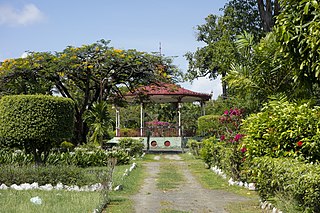
Guyana Botanical Gardens is a tropical botanical garden in Georgetown, Guyana. It is next to the Guyana Zoo and Castellani House.
References
- 1 2 3 4 Lewis, C. "Jenman, George Samuel". Botanical Collectors: Latin America. The Natural History Museum. Archived from the original on 21 April 2013. Retrieved 20 August 2012.
- 1 2 Anon. "Jenman, George Samuel (1845-1902)". Plant Science. JSTOR. JSTOR 000004078.
- 1 2 Kandasammy, Lloyd F. (24 April 2008). "Around the Museums of Guyana". Stabroek News. pp. 20–22. Retrieved 20 August 2012.
- 1 2 Frodin, David (2001). "Superregion 24-29:The West Indies". Guide to Standard Floras of the World: An Annotated, Geographically Arranged Systematic Bibliography of the Principal Floras, Enumerations, Checklists and Chorological Atlases of Different Areas (2nd ed.). Cambridge: Cambridge University Press. p. 284. ISBN 9780521790772.
- ↑ Munro, Arlene (30 August 2001). "The Old Colonial Houses of Georgetown". Stabroek News. Retrieved 20 August 2012.
- ↑ Anon. "Monuments". Guyana Botanical Gardens Official Website. Archived from the original on 1 June 2012. Retrieved 20 August 2012.
- ↑ Lumbsch TH, Huhndorf SM (December 2007). "Outline of Ascomycota – 2007". Myconet. Chicago, USA: The Field Museum, Department of Botany. 13: 1–58. Archived from the original on 2009-03-18.